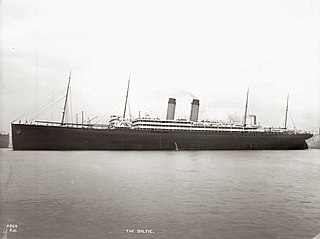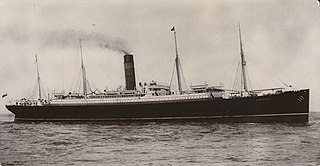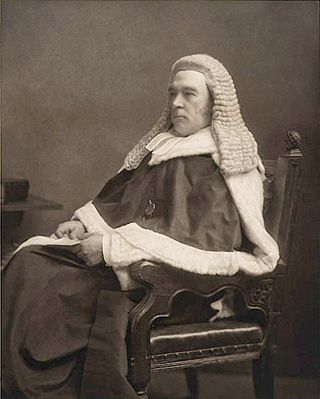
RMS Olympic was a British ocean liner and the lead ship of the White Star Line's trio of Olympic-class liners. Olympic had a career spanning 24 years from 1911 to 1935, in contrast to her short-lived sister ships, Titanic and Britannic. This included service as a troopship during the First World War, which gained her the nickname Old Reliable. She returned to civilian service after the war, and served successfully as an ocean liner throughout the 1920s and into the first half of the 1930s, although increased competition, and the slump in trade during the Great Depression after 1930, made her operation increasingly unprofitable.
CQD is one of the first distress signals adopted for radio use. On 7 January 1904 the Marconi International Marine Communication Company issued "Circular 57", which specified that, for the company's installations, beginning 1 February 1904 "the call to be given by ships in distress or in any way requiring assistance shall be 'C Q D' ".

Harold Sydney Bride was a British merchant seaman and the junior wireless officer on the ocean liner RMS Titanic during her ill-fated maiden voyage.

Edward John Smith was a British mercantile marine officer. He served as master of numerous White Star Line vessels. He was the captain of RMS Titanic, and perished when the ship sank on her maiden voyage.

RMS Republic was a steam-powered ocean liner built in 1903 by Harland and Wolff in Belfast, and lost at sea in a collision in 1909 while sailing for the White Star Line. The ship was equipped with a new Marconi wireless telegraphy transmitter, and issued a CQD distress call, resulting in the saving of around 1,500 lives. Known as the "Millionaires' Ship" because of the number of wealthy Americans who traveled by her, she was described as a "palatial liner" and was the flagship of White Star Line's Boston service. This was the first important marine rescue made possible by radio, and brought worldwide attention to this new technology.

RMS Baltic was an ocean liner of the White Star Line that sailed between 1904 and 1932. At 23,876 gross register tonnage, she was the world's largest ship until May 1906. She was the third of a quartet of ships, all measuring over 20,000 gross register tons, dubbed The Big Four, the other three being RMS Celtic, RMS Cedric, and RMS Adriatic.

Joseph Bruce Ismay was an English businessman who served as chairman and managing director of the White Star Line. In 1912, he came to international attention as the highest-ranking White Star official to survive the sinking of the company's new flagship RMS Titanic, for which he was subject to severe criticism.

Titanic is a 1943 German propaganda film made during World War II in Berlin by Tobis Productions for UFA, depicting the catastrophic sinking of RMS Titanic in 1912. This was the third German language dramatization of the event, following a silent film released in 1912 just four months after the sinking and a British produced German film about the disaster in 1929. Titanic was commissioned by Nazi Propaganda Minister Joseph Goebbels with the intent of showing not only the superiority of German filmmaking, but also as a propaganda vehicle which would depict British and American capitalism as being responsible for the disaster. The addition of an entirely fictional heroic German officer to the ship's crew was intended to demonstrate the superior bravery and selflessness of German men as compared to the British officers.

Sir Arthur Henry Rostron, KBE, RD, RNR was a British merchant seaman and a seagoing officer for the Cunard Line. He is best known as the captain of the ocean liner RMS Carpathia, when it rescued the survivors from the RMS Titanic after the ship sank in 1912 in the middle of the North Atlantic Ocean.

Futility is a novella written by Morgan Robertson, first published in 1898. It was revised as The Wreck of the Titan in 1912. It features a fictional British ocean liner named Titan that sinks in the North Atlantic Ocean after striking an iceberg. The Titan and its sinking are famous for similarities to the passenger ship RMS Titanic and its sinking 14 years later. After the sinking of the Titanic the novel was reissued with some changes, particularly to the ship's displacement.

Henry Tingle Wilde, RNR was a British naval officer who was the chief officer of the RMS Titanic. He died when the ship sank on her maiden voyage in April 1912.

Harold Thomas Cottam was a British wireless operator on the RMS Carpathia who fortuitously happened to receive the distress call from the sinking RMS Titanic on 15 April 1912. Cottam's decision to awaken Captain Arthur Henry Rostron and relay Titanic's message in spite of the scepticism of the officer on watch allowed Carpathia to arrive at the scene hours before any other ship and is "credited with saving hundreds of lives." He was a personal friend of the Titanic's wireless operators Harold Bride and Jack Phillips.

The Titanic sank in the early morning hours of 15 April 1912 in the North Atlantic Ocean, four days into her maiden voyage from Southampton to New York City. The largest ocean liner in service at the time, Titanic had an estimated 2,224 people on board when she struck an iceberg at around 23:40 on Sunday, 14 April 1912. Her sinking two hours and forty minutes later at 02:20 ship's time on Monday, 15 April, resulted in the deaths of more than 1,500 people, making it one of the deadliest peacetime maritime disasters in history.

RMS Carpathia was a Cunard Line transatlantic passenger steamship built by Swan Hunter & Wigham Richardson in their shipyard in Wallsend, England.

The "Big Four" were a quartet of early-20th-century 20,000-ton ocean liners built by the Harland & Wolff shipyard for the White Star Line, to be the largest and most luxurious ships afloat. The group consisted of Celtic, Cedric, Baltic and Adriatic.

Titanic Lifeboat No. 1 was a lifeboat from the steamship RMS Titanic. It was the fifth boat launched to sea, over an hour after the liner collided with an iceberg and began sinking on 14 April 1912. With a capacity of 40 people, it was launched with only 12 aboard, the fewest to escape in any one boat that night.

The sinking of the RMS Titanic on April 14–15, 1912 resulted in an inquiry by a subcommittee of the Commerce Committee of the United States Senate, chaired by Senator William Alden Smith. The hearings began in New York on April 19, 1912, later moving to Washington, D.C., concluding on May 25, 1912 with a return visit to New York.

The sinking of the RMS Titanic on 15 April 1912 resulted in an inquiry by the British Wreck Commissioner on behalf of the British Board of Trade. The inquiry was overseen by High Court judge Lord Mersey, and was held in London from 2 May to 3 July 1912. The hearings took place mainly at the London Scottish Drill Hall, at 59 Buckingham Gate, London SW1.

Mauritz Håkan Björnström-Steffansson, was a Swedish businessman who survived the sinking of the RMS Titanic in 1912. In early 1913, Steffansson filed by far the largest claim for financial compensation made against the White Star Line, for the loss of a single item of luggage or cargo as a result of the disaster.

SS Birma was a British-built transatlantic passenger ship. She was built in 1894 by Fairfield Shipbuilding and Engineering Company in Govan, United Kingdom, as Arundel Castle and later went through numerous ownership and name changes, including coming into the hands of the Russian American Line. In 1912, Birma was one of the ships to respond to the sinking of RMS Titanic. She was broken up in 1924 following acquisition by a German line after a liquidation sale.